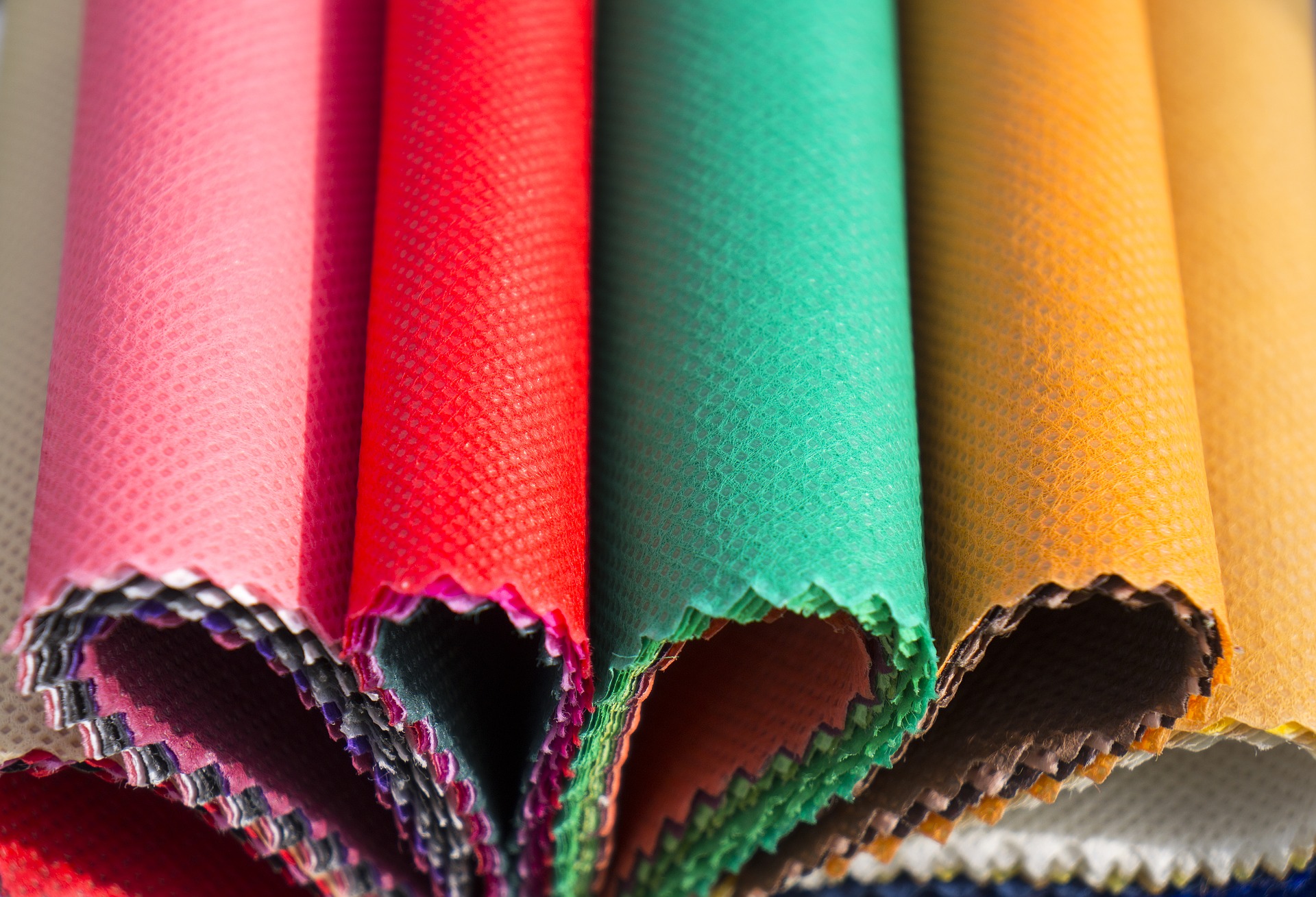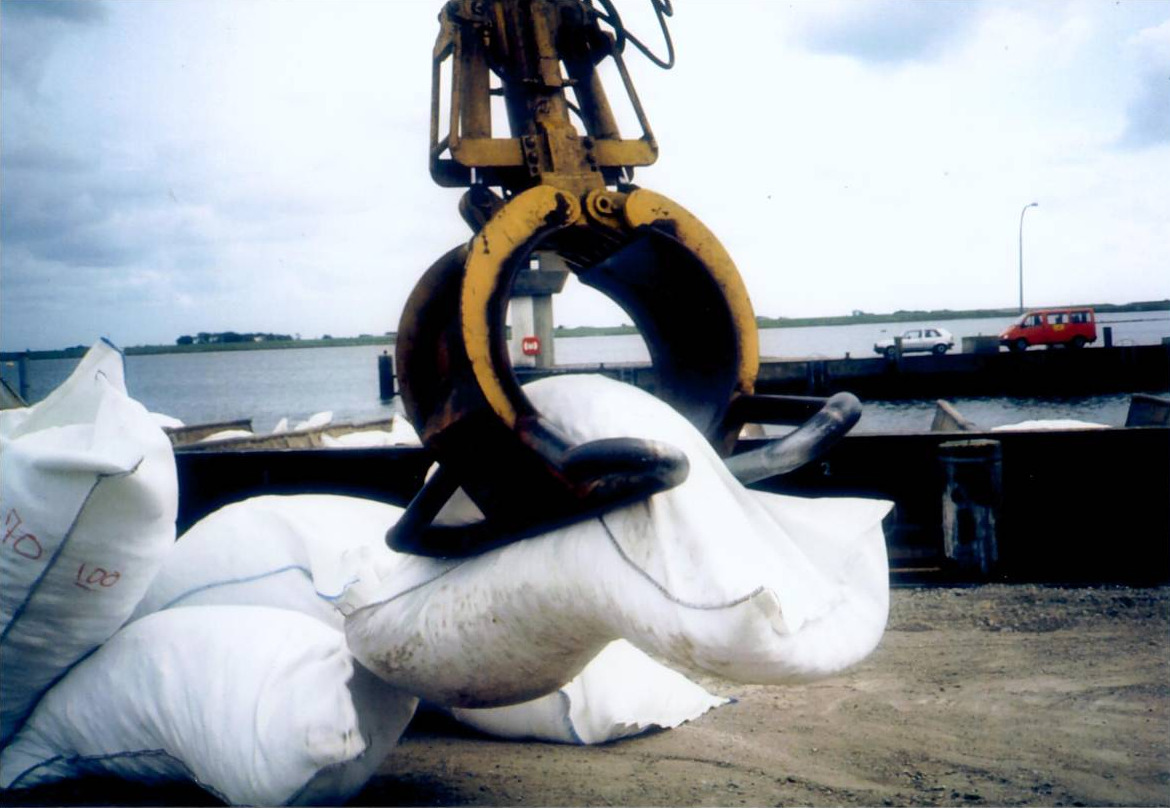|
Confil
Confil is a wet-laid nonwoven fabric made from a blend of polyester and cellulose. The International Paper Company acquired the manufacturing process from in 1968, and marketed Confil as a disposable fabric for domestic and hospital use. Although the product was too late to market to take advantage of the 1960s paper clothing fad, International Paper promoted it for general clothing use, positioning the product as superior to paper in feel and durability, but cheap enough to throw away. Despite limited adoption in the fashion industry, demand justified construction of a $16 million factory in Lewisburg, Pennsylvania to increase production volumes. As the price of cotton more than doubled during the 1970s, Confil found use in other specialty applications such as wallpaper, construction fabrics, and geotextiles. In the early 21st century, Confil is largely used in filtration Filtration is a physical separation process that separates solid matter and fluid from a mixture ... [...More Info...] [...Related Items...] OR: [Wikipedia] [Google] [Baidu] |
Nonwoven Fabric
Nonwoven fabric is a fabric-like material made from staple fibre (short) and long fibres (continuous long), bonded together by chemical, mechanical, heat or solvent treatment. The term is used in the textile manufacturing industry to denote fabrics, such as felt, which are neither woven nor knitted. Some non-woven materials lack sufficient strength unless densified or reinforced by a backing. In recent years, non-wovens have become an alternative to polyurethane foam. Applications Nonwoven fabrics are broadly defined as sheet or web structures bonded together by entangling fiber or filaments (and by perforating films) mechanically, thermally or chemically. They are flat or tufted porous sheets that are made directly from separate fibres, molten plastic or plastic film. They are not made by weaving or knitting and do not require converting the fibres to yarn. Typically, a certain percentage of recycled fabrics and oil-based materials are used in nonwoven fabrics. The percentag ... [...More Info...] [...Related Items...] OR: [Wikipedia] [Google] [Baidu] |
Polyester
Polyester is a category of polymers that contain the ester functional group in every repeat unit of their main chain. As a specific material, it most commonly refers to a type called polyethylene terephthalate (PET). Polyesters include naturally occurring chemicals, such as in plants and insects, as well as synthetics such as polybutyrate. Natural polyesters and a few synthetic ones are biodegradable, but most synthetic polyesters are not. Synthetic polyesters are used extensively in clothing. Polyester fibers are sometimes spun together with natural fibers to produce a cloth with blended properties. Cotton-polyester blends can be strong, wrinkle- and tear-resistant, and reduce shrinking. Synthetic fibers using polyester have high water, wind and environmental resistance compared to plant-derived fibers. They are less fire-resistant and can melt when ignited. Liquid crystalline polyesters are among the first industrially used liquid crystal polymers. They are used f ... [...More Info...] [...Related Items...] OR: [Wikipedia] [Google] [Baidu] |
Cellulose
Cellulose is an organic compound with the formula , a polysaccharide consisting of a linear chain of several hundred to many thousands of β(1→4) linked D-glucose units. Cellulose is an important structural component of the primary cell wall of green plants, many forms of algae and the oomycetes. Some species of bacteria secrete it to form biofilms. Cellulose is the most abundant organic polymer on Earth. The cellulose content of cotton fiber is 90%, that of wood is 40–50%, and that of dried hemp is approximately 57%. Cellulose is mainly used to produce paperboard and paper. Smaller quantities are converted into a wide variety of derivative products such as cellophane and rayon. Conversion of cellulose from energy crops into biofuels such as cellulosic ethanol is under development as a renewable fuel source. Cellulose for industrial use is mainly obtained from wood pulp and cotton. Some animals, particularly ruminants and termites, can digest cellulose with the h ... [...More Info...] [...Related Items...] OR: [Wikipedia] [Google] [Baidu] |
International Paper
The International Paper Company is an American pulp and paper company, the largest such company in the world. It has approximately 56,000 employees, and is headquartered in Memphis, Tennessee. History The company was incorporated January 31, 1898, upon the merger of 17 pulp and paper mills in the northeastern United States. Its founders and first two presidents were William Augustus Russell, who died suddenly in January 1899, and Hugh J. Chisholm. Philip Tell Dodge, president of the Mergenthaler Linotype Company, served as its chairman for 11 years. The invention of the Linotype dramatically increased the size of newspapers and the need for newsprint. The newly formed company supplied 60 percent of all newsprint in the country. Hudson River Mill The Hudson River Mill in Corinth, New York, where the Sacandaga River joins the Hudson River, was a pioneer in the development of the modern paper industry in the late 19th century. The first wood-based newsprint paper mill i ... [...More Info...] [...Related Items...] OR: [Wikipedia] [Google] [Baidu] |
Paper Clothing
Paper clothing describes garments and accessories made from paper or paper substitutes. The earliest known paper clothing was made by Japanese craftspeople in the 10th century BCE, usually from washi paper, and called ''kamiko''. ''Kamiko'' became a traditional Japanese craft of Shiroishi, Miyagi, carried out to a very high standard and skill during the Edo period. The practice began to die out in the late 19th century, before being revived in the mid-20th century. In the early 20th century, German and Austrian manufacturers began producing "ersatz" paper cloth and clothing in response to wool shortages caused by World War I. While there was a brief period of interest in paper suits and garments during the early 1920s, this did not catch on as despite paper's economic advantages, traditional woven cloth was widely preferred. However, some fancy dress costumes, hats, and fashionable accessories were made from crêpe paper during the early 20th century and in response to resource sh ... [...More Info...] [...Related Items...] OR: [Wikipedia] [Google] [Baidu] |
Lewisburg, Pennsylvania
Lewisburg is a borough in Union County, Pennsylvania, United States, south by southeast of Williamsport and north of Harrisburg. In the past, it was the commercial center for a fertile grain and general farming region. The population was 5,158 as of the 2020 census. It is the county seat of Union County. Located in central Pennsylvania's Susquehanna River Valley, on the West Branch Susquehanna River, Lewisburg is northwest of Sunbury. It is home to Bucknell University and is near the Lewisburg Federal Penitentiary. Its 19th-century downtown is on the National Register of Historic Places. Lewisburg is the principal city of the ''Lewisburg, PA Micropolitan Statistical Area'', and is also part of the larger '' Bloomsburg-Berwick-Sunbury, PA Combined Statistical Area.'' History Lewisburg was founded in 1785 by Ludwig Derr. A settler of the area (since as early as 1763–1769), Derr had purchased several tracts of land from the William Penn family and other neighboring land o ... [...More Info...] [...Related Items...] OR: [Wikipedia] [Google] [Baidu] |
Wallpaper
Wallpaper is a material used in interior decoration to decorate the interior walls of domestic and public buildings. It is usually sold in rolls and is applied onto a wall using wallpaper paste Adhesive flakes that are mixed with water to produce wallpaper paste Wallpaper adhesive or wallpaper paste is a specific adhesive Adhesive, also known as glue, cement, mucilage, or paste, is any non-metallic substance applied to one or both s .... Wallpapers can come plain as "lining paper" (so that it can be painted or used to help cover uneven surfaces and minor wall defects thus giving a better surface), textured (such as Anaglypta), with a regular repeating pattern design, or, much less commonly today, with a single non-repeating large design carried over a set of sheets. The smallest rectangle that can be tiled to form the whole pattern is known as the pattern repeat. Wallpaper printing techniques include surface printing, rotogravure, gravure printing, silk screen-printing ... [...More Info...] [...Related Items...] OR: [Wikipedia] [Google] [Baidu] |
Geotextiles
Geotextiles are permeable fabrics which, when used in association with soil, have the ability to separate, filter, reinforce, protect, or drain. Typically made from polypropylene or polyester, geotextile fabrics come in two basic forms: woven (resembling mail bag sacking) and nonwoven (resembling felt). Geotextile composites have been introduced and products such as geogrids and meshes have been developed. Geotextiles are durable and are able to soften a fall. Overall, these materials are referred to as geosynthetics and each configuration— geonets, geosynthetic clay liners, geogrids, geotextile tubes, and others—can yield benefits in geotechnical and environmental engineering design. History Geotextiles were originally intended to be a substitute for granular soil filters. The original, and still sometimes used, term for geotextiles is ''filter fabrics''. Work originally began in the 1950s with R.J. Barrett using geotextiles behind precast concrete seawalls, under preca ... [...More Info...] [...Related Items...] OR: [Wikipedia] [Google] [Baidu] |
Filtration
Filtration is a physical separation process that separates solid matter and fluid from a mixture using a ''filter medium'' that has a complex structure through which only the fluid can pass. Solid particles that cannot pass through the filter medium are described as ''oversize'' and the fluid that passes through is called the ''filtrate''. Oversize particles may form a filter cake on top of the filter and may also block the filter lattice, preventing the fluid phase from crossing the filter, known as ''blinding''. The size of the largest particles that can successfully pass through a filter is called the effective ''pore size'' of that filter. The separation of solid and fluid is imperfect; solids will be contaminated with some fluid and filtrate will contain fine particles (depending on the pore size, filter thickness and biological activity). Filtration occurs both in nature and in engineered systems; there are biological, geological, and industrial forms. Filtration is ... [...More Info...] [...Related Items...] OR: [Wikipedia] [Google] [Baidu] |
Nonwoven Fabrics
Nonwoven fabric is a fabric-like material made from staple fibre (short) and long fibres (continuous long), bonded together by chemical, mechanical, heat or solvent treatment. The term is used in the textile manufacturing industry to denote fabrics, such as felt, which are neither woven nor knitted. Some non-woven materials lack sufficient strength unless densified or reinforced by a backing. In recent years, non-wovens have become an alternative to polyurethane foam. Applications Nonwoven fabrics are broadly defined as sheet or web structures bonded together by entangling fiber or filaments (and by perforating films) mechanically, thermally or chemically. They are flat or tufted porous sheets that are made directly from separate fibres, molten plastic or plastic film. They are not made by weaving or knitting and do not require converting the fibres to yarn. Typically, a certain percentage of recycled fabrics and oil-based materials are used in nonwoven fabrics. The percentage ... [...More Info...] [...Related Items...] OR: [Wikipedia] [Google] [Baidu] |
Cellulose
Cellulose is an organic compound with the formula , a polysaccharide consisting of a linear chain of several hundred to many thousands of β(1→4) linked D-glucose units. Cellulose is an important structural component of the primary cell wall of green plants, many forms of algae and the oomycetes. Some species of bacteria secrete it to form biofilms. Cellulose is the most abundant organic polymer on Earth. The cellulose content of cotton fiber is 90%, that of wood is 40–50%, and that of dried hemp is approximately 57%. Cellulose is mainly used to produce paperboard and paper. Smaller quantities are converted into a wide variety of derivative products such as cellophane and rayon. Conversion of cellulose from energy crops into biofuels such as cellulosic ethanol is under development as a renewable fuel source. Cellulose for industrial use is mainly obtained from wood pulp and cotton. Some animals, particularly ruminants and termites, can digest cellulose with the h ... [...More Info...] [...Related Items...] OR: [Wikipedia] [Google] [Baidu] |

.jpg)



